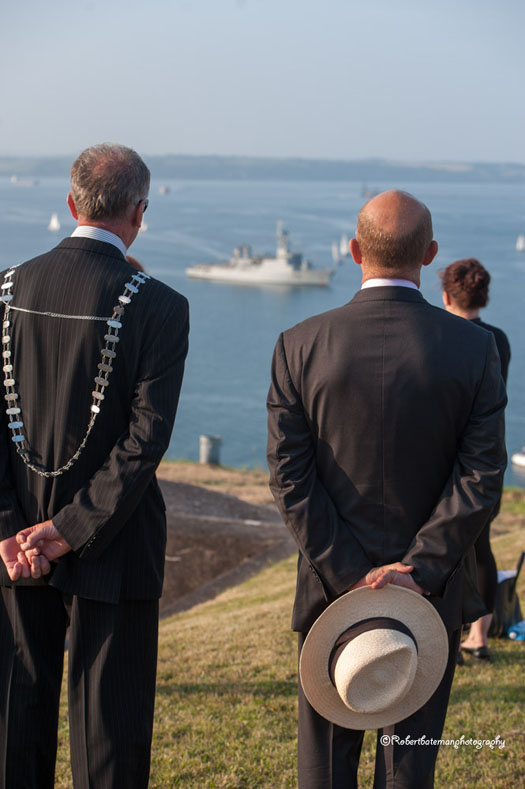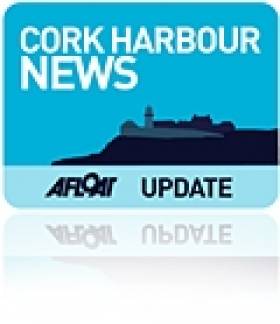Displaying items by tag: Fort meagher
Camden Fort Meagher on Cork Harbour is set to reopen to the public in the coming weeks after extensive remediation works.
As RTÉ News reports, the fort is “one of the finest remaining examples of a classical coastal artillery fort” and played a crucial role in coastal defence for nearly 400 years after it was first established in the 16th century.
The fort was one of the Treaty Port installations handed over to the Irish Defence Forces in 1938, and has been in Cork County Council hands since 1989.
Volunteers led a campaign since 2010 to rescue the fort from potential dereliction but as volunteer Daniel Maverley says: “We could only take it so far. The Council came in…and they are taking it to the next stage.”
Some €480,000 in investment — including funding of €160,000 from the Department of Housing, Local Government and Heritage — included restoration on the casemate block which houses the fort’s primary exhibitions.
A full review of the potential of the fort was carried out late last year, the council says, with “future phases of development identified to preserve Camden Fort Meagher’s historical significance, as well as contributing significantly to the local community and economy”.
The council has also committed to recruiting 10 seasonal guides and will soon appoint a contractor to run the fort’s cafe, with a view to having the fort open up to five days a week — while €750,000 of accessibility measures are in the planning stages.
RTÉ News has more on the story HERE.
75th Anniversary Commemoration of the British Handover of Camden Fort Meagher to the Irish Defence Forces
#corkharbour – Camden Fort Meagher commemorated the 75th anniversary of the handover of the fort from British Crown Forces to The Irish Defence Forces writes Claire Bateman. Scroll down for photos of last night's ceremony.
Camden Fort Meagher, situated in Crosshaven, Cork Harbour, Co. Cork, was one of several Treaty Port forts transferred to the Irish Government in 1938. It is recognised as being one of the finest remaining examples of a classical Coastal Artillery Fort in the world.
Paul Brierley, Project Coordinator at Camden Fort Meagher, emphasised the significance of the event. "We are delighted to commemorate this historic occasion which marks a pivotal point, not only in the fort's history, but also in our National history." The fort was officially renamed Camden Fort Meagher on the histrical evening, highlighting two significant figures in Britsh and Irish military history, the Earl of Camden and Thomas Francis Meagher.
The ceremony for the occasion last evening was hugely historical, and was filled with emotion, poignancy, happiness and pride. The fort was filled to capacity, the sun shone on everyone and every place. The Cork designed and built L.E. Eithne was moored off the fort. She was designed by Patrick Martin, Chief Naval Architect at Verolme Cork Dockyard where she was built. As Flaghip of the Irish Naval Service, Eithne led by firing the first salute, and this was returned by an Army salute with two 25 pounder canon.
The scene with the crowds, excitement, blazing sun, the presence of the British Ambassador, His Excellency Dominic Chilcott CMG, complete with elegant panama hat – could have been reminiscent of an Indian setting though we knew it was our own beautiful country! Other distinguished guests for the official renaming of the Fort included the Mayor of Cork County, Councillor Noel O'Connor, Cork County Manager, Martin Riordan and a very distinguished guest in the person of Mr. Michael Kelly a 97–year–old veteran who had seen service at the Fort when it was under British Command.

LE Eithne passes by Fort Meagher during last night's commemoration. Photo: Bob Bateman. Scroll down for more photos.
The Irish Army, Irish Navy and retired units from reserve forces that have trained at the fort were also represented on the evening.
The natural setting was made all the more splendid by the yachts taking part in the Royal Cork Yacht Club Thursday night racing and made a lovely sight passing the L.E. Eithne on their way back to Crosshaven.
All in all, a most magical evening that will provide lasting memories for all that were privileged to be present and no memory more poignant than that of the Army figure silhouetted in the evening sunlight raising the Tricolour to the haunting sound of the lone Bugle.
The evening concluded with the official flypast of the Irish Coastguard Search and Rescue helicopter from Waterford.

























































